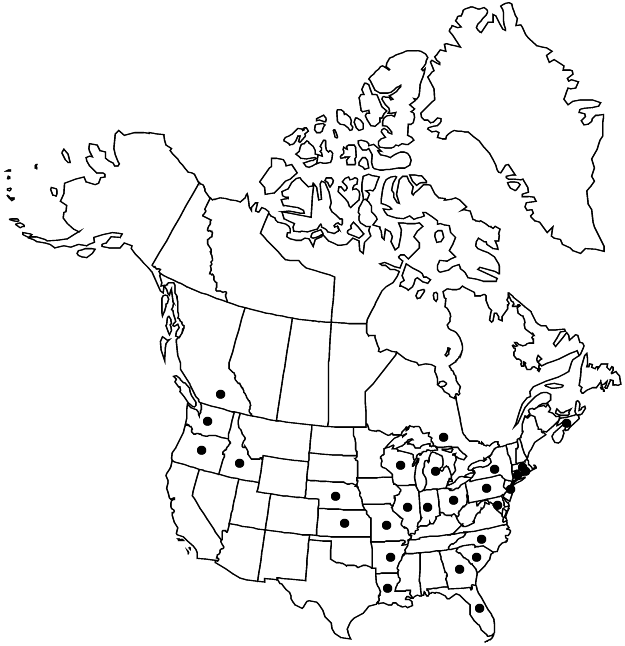Cerastium semidecandrum
Sp. Pl. 1: 438. 1753.
Plants annual, with slender taproot. Stems erect or ascending, branching at base, 1–20 cm, viscid, covered with short, dense, glandular and eglandular hairs; short axillary tufts of leaves absent. Leaves not marcescent, sessile but proximal leaves often spatulate; blade 5–18 × 2–5 mm, covered with short, white hairs; basal leaves with blade narrowly oblanceolate and ± spatulate, apex obtuse; cauline with blades ovate to elliptic-oblong, apex obtuse to acute. Inflorescences open, 3–30-flowered cymes; bracts lanceolate, with broad, scarious margins, glandular-pubescent. Pedicels curved at apex, often sharply angled at base, 3–8 (–12) mm, 1–3 times as long as capsule, densely glandular-pubescent and viscid. Flowers: sepals narrowly lanceolate, 3–5 mm, margins broad, apex acute, glandular-pubescent; petals with unbranched veins, oblanceolate, 2–3 mm, shorter than sepals, apex notched; stamens 5; styles 5. Capsules cylindric, slightly curved, 4.5–6.5 mm, 1.5–2 times as long as sepals; teeth 10, erect, margins convolute. Seeds pale yellowish-brown, 0.4–0.6 mm, finely tuberculate; testa not inflated. 2n = 36.
Phenology: Flowering spring.
Habitat: Common weed in dry, sandy, and gravelly places, roadsides and footpaths, parking lots, dunes
Elevation: 0-300 m
Distribution

Introduced; B.C., N.S., Ont., Ark., Conn., Fla., Ga., Idaho, Ill., Ind., Kans., La., Md., Mass., Mich., Mo., Nebr., N.J., N.Y., N.C., Ohio, Oreg., Pa., R.I., S.C., Wash., Wis., Eurasia
Discussion
The very broad, scarious margins of the sepals and bracts distinguish this small, ephemeral species.
Selected References
None.
Lower Taxa
"-2timesaslongassepals" is not declared as a valid unit of measurement for this property."-3timesaslongascapsule" is not declared as a valid unit of measurement for this property.